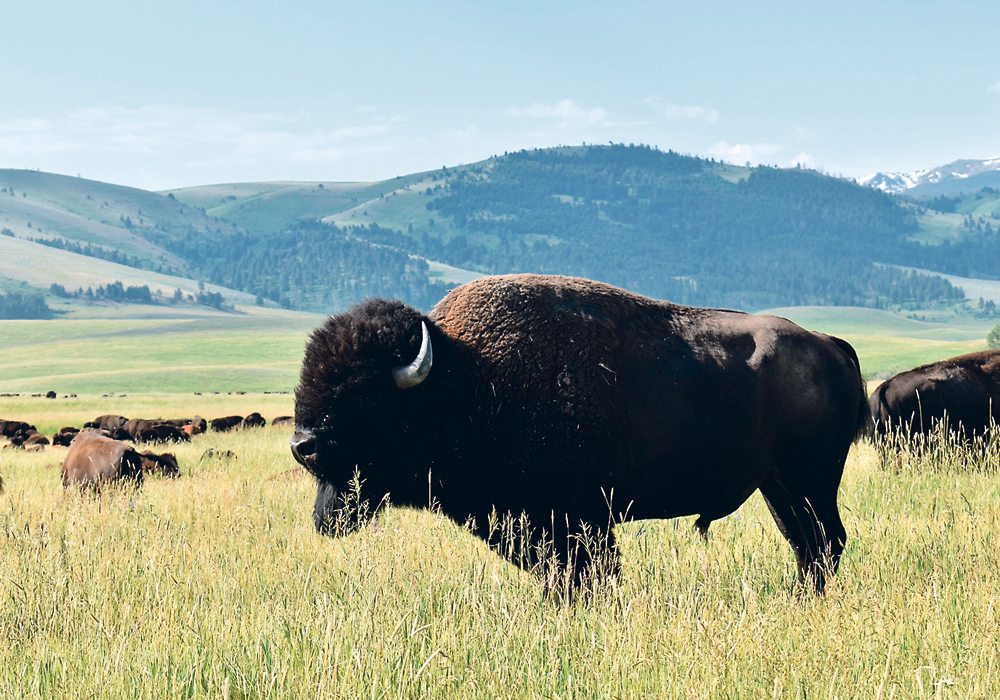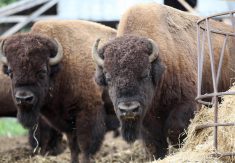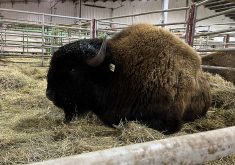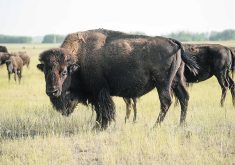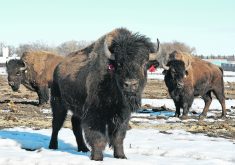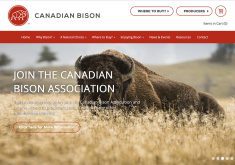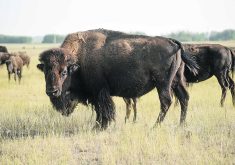Efforts are underway to increase the number of free-ranging bison in Western Canada and Montana.
Signatories to the 2014 bison treaty, which includes numerous First Nations, are working to establish regions where bison can roam and where native connections with the iconic species can be re-established.
Leroy Little Bear, a scholar integral to formation of the bison treaty, said such a region is close to establishment by the Blackfeet Nation in northern Montana near the Canadian border at Chief Mountain.
As well, Banff National Park recently acknowledged the one-year anniversary of establishing a bison herd within its boundaries. That herd is expected to roam free in 2019.
Read Also

Farming Smarter receives financial boost from Alberta government for potato research
Farming Smarter near Lethbridge got a boost to its research equipment, thanks to the Alberta government’s increase in funding for research associations.
Speaking at a Feb. 8 meeting of the Southern Alberta Council of Public Affairs, Little Bear said he thinks it’s possible to establish other free-roaming bison herds. Small herds may work on native reserves but there is more space in national parks.
“There has never been any real law, legislation that really protects the buffalo, so it has always been considered domestic, so in other words not different from horses and cattle and so on,” Little Bear said in an interview before his presentation.
“We’re now working with the province to reclassify the status of the buffalo to be considered wild … and that will bring about a whole different management scheme.”
In Alberta, free-ranging bison outside of a bison management area in the province’s northwestern corner are designated as livestock.
Little Bear said reclassification wouldn’t affect existing bison ranchers.
“We think there’s someplace for both — in other words, the cattle, the buffalo ranching and the wild herds,” he said. “It’s not a question of, ‘hey, we want to push everybody out.’ No, it’s really a co-operative approach that we’re taking with regard to the buffalo.”
His view is supported by southern Alberta bison rancher Cody Spencer.
“Specific herds are designated as wildlife and then a bison ranching industry can thrive as well,” said Spencer.
“I think that there’s room in Alberta for us to immediately go ahead and designate our specific herds of wild bison as wild bison and still maintain that buffer between the two. Now with our industry expanding, population expanding, we need some protections for those wild herds and for the future herds that are coming, so I think that we can have both.”
Little Bear said free-roaming bison could help repair environmental damage and improve biodiversity on the landscape.
He added that the presence of more bison would help native youth better understand and connect with their culture because the iconic species would be readily seen.
“If I don’t see any churches around, if I don’t see a cross around the place, I can still have all the beliefs but if there’s no crosses around that symbolize the icon, I’m just a little bit less Christian. And so, it goes … when the buffalo is not seen on a daily basis, then those connections are not being made.”
A veterinarian asked Little Bear about bison containment and culling strategies.
Little Bear said the process of establishing wild bison herds would be transparent and done after dialogue with ranchers and government.
“We’re not naive about having to deal with the existing establishment,” he said.




